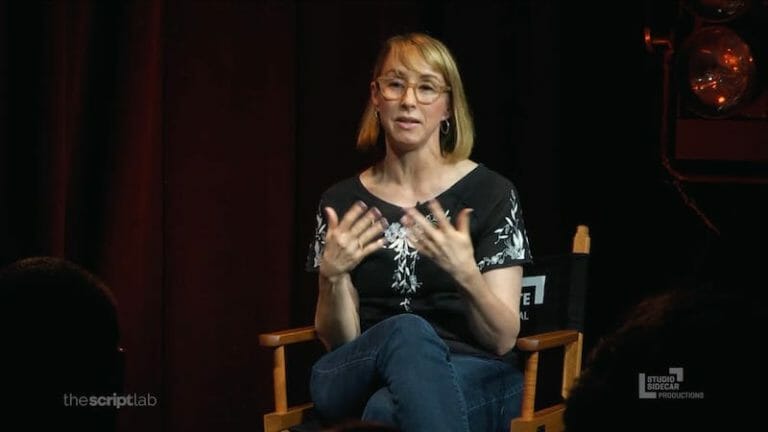By Ken Miyamoto · December 16, 2019

What are some simple screenwriting tips on writing action that pops off of the page and engages the reader?
Welcome to our ongoing Learning from the Masters and Industry Insiders series where we seek out and feature excellent videos, interviews, and discussions of the art, craft, and business of screenwriting and pull the best words of wisdom, writing tips, and screenwriting advice.
We turn to The Script Lab‘s own TSL 360 video interview with Kira Snyder, writer and producer on The CW series The 100, and The Handmaid’s Tale. She was also one of the screenwriter’s for Steven S. DeKnight’s Pacific Rim: Uprising.
Snyder has worked as the co-producer of The 100 for three seasons and wrote five episodes for the series as well. In 2016, she worked as a supervising producer for the Hulu series The Handmaid’s Tale for ten episodes. She also worked as a story editor on two Syfy series — Alphas and Eureka. She was an executive story editor for both shows as well.
In this clip, Snyder discusses how to write engaging action sequences in screenplays. We pull the best information from this short clip and include our own elaboration as well.
“I love writing action. I think it’s really fun. It’s a challenge because it can be very hard to read on the page… it needs to be clear, it needs to be entertaining, and then when you don’t necessarily have dialogue to pop out to, it’s a real challenge.”
Many screenwriters forget that the read of the script has to be entertaining as well. It’s not just explanation and description. With action, that explanation and description has to feel as if the reader is watching the movie unfold in real-time within their own mind’s eye.
So fast-paced action writing has to be clear, short, sweet, and to the point. And it has to be written in a way that entertains the reader.
“I know some writing teachers discourage students from using those things, but honestly, anything that helps the read — and more specifically helps paint the picture in the viewers’ mind of what you want them to fell and see… I’m game for anything. So I will bold, not often, but I will use CAPS a lot, and I use line spacing a lot. So there’s a lot of power of having two words on a line and one word on a line. If you want a moment to really land emotionally, it seems counter-intuitive but that might have more impact if you do space it out and give it time to breathe on the page rather than squashing it into a three-line action block.”
All three of those formatting elements are key tools in action writing. You don’t want pivotal moments lost within multi-sentence action blocks of scene description.
But be wary of overusing them. Bold and CAPS should only be used when you want something to truly stand out.
Line spacing is by far the most useful of the three. It allows you to spread those visuals out and gives the scripts a necessary pulse and beat that keeps that action writing engaging.
Watch the clip below and join TSL 360 to watch Kira Snyder’s whole interview!
For all the latest from The Script Lab, be sure to follow us on Twitter, Facebook, and Instagram.
And become a member of TSL 360 to enjoy the LARGEST screenwriting education content library, featuring masterclasses, deep-dive interviews, and lectures from Academy Award-winning screenwriters, TV show-runners, producers, literary managers, agents, studio executives, and leading educators – all in one place.